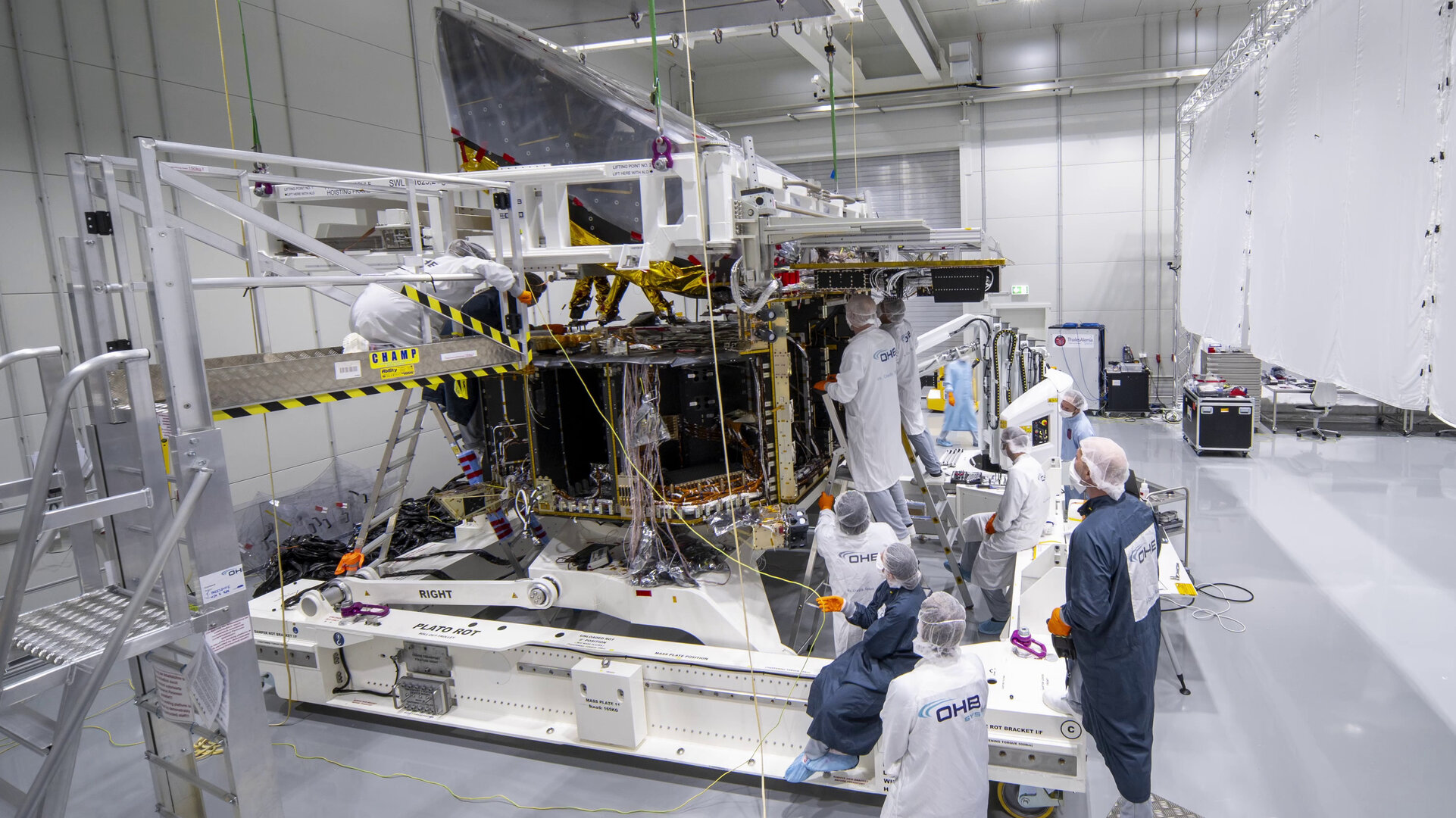Key Takeaways
- ESA’s Plato mission successfully combined its payload and service modules, crucial for its operation.
- Plato, equipped with 26 cameras, will search for Earth-like exoplanets, launching in December 2026.
- The mission involves collaboration between ESA and the Plato Mission Consortium, led by the German Aerospace Center.
Plato Mission Progress
On June 11, engineers at OHB’s facilities in Germany successfully integrated the two main components of the European Space Agency’s (ESA) Plato mission. This critical phase involved the use of a precision crane to lift and carefully position the payload module, which houses 26 ultra-sensitive cameras, over the service module. The service module includes essential subsystems for power, propulsion, and Earth communication.
With meticulous attention to detail, the team aligned the payload module and tested its electrical connections before securing a panel that connects the two modules both physically and electronically. This panel, which is hinged for opening and closing, contains the electronics necessary for processing data from the cameras. With both modules now united, Plato is advancing toward its goal of identifying Earth-like planets.
In the coming weeks, the spacecraft will undergo a series of tests to ensure the proper functioning of its cameras and data processing systems. Following these tests, Plato will be moved from OHB’s cleanrooms to ESA’s technical center, ESTEC, in the Netherlands. There, engineers will complete the spacecraft by adding a combined sunshield and solar panel module.
Before its scheduled launch on an Ariane 6 rocket in December 2026, Plato will undergo final tests to confirm its readiness for space operations. Once all systems are deemed operational, the spacecraft will be shipped to the launch site in French Guiana.
Plato, which stands for PLAnetary Transits and Oscillations of stars, aims to utilize its 26 cameras to explore terrestrial exoplanets located in the habitable zones around Sun-like stars. The mission’s scientific instruments are a collaborative effort between ESA and the Plato Mission Consortium, which consists of various European research centers, institutes, and industries, with leadership provided by the German Aerospace Center (DLR). The spacecraft’s assembly is spearheaded by OHB, alongside partners Thales Alenia Space and Beyond Gravity.
The content above is a summary. For more details, see the source article.















